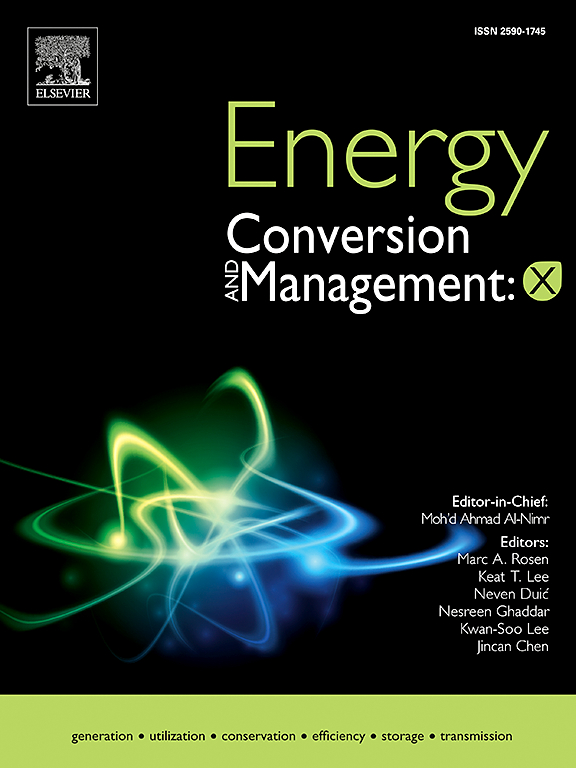Freshwater production through multi effect desalination integrated with parabolic trough collectors
IF 7.1
Q1 ENERGY & FUELS
引用次数: 0
Abstract
Today, due to the increase in industrial activities and the increase in the world’s population, the human need for fresh water has increased. About 70% of the earth’s surface is covered by water, but about 15% of people suffer from lack of access to fresh water, which will increase by 40% by 2025. As a result, the use of seawater desalination units can solve the above basic problem. The use of fossil fuels is no longer a suitable solution for providing energy for desalination of sea water due to the increase in the emission of greenhouse gases, including carbon dioxide. On the other hand, the use of solar energy, due to its availability and cleanliness, is a promising solution for desalination of sea water. Integration of renewable systems with desalination units can solve the shortage of fresh water in the world and make the systems sustainable. The most important desalination processes include membrane desalination (for example, reverse osmosis (RO)) and thermal desalination (for example, multistage flash (MSF) and multi effect distillation (MED)). In this review article, the integration of parabolic trough collectors (PTC) with MED desalination units is investigated. And the advantages and disadvantages of each of these systems have been examined. Finally, increasing knowledge in the field of fresh water production using parabolic solar collectors has been significantly emphasized.
求助全文
约1分钟内获得全文
求助全文
来源期刊

Energy Conversion and Management-X
Multiple-
CiteScore
8.80
自引率
3.20%
发文量
180
审稿时长
58 days
期刊介绍:
Energy Conversion and Management: X is the open access extension of the reputable journal Energy Conversion and Management, serving as a platform for interdisciplinary research on a wide array of critical energy subjects. The journal is dedicated to publishing original contributions and in-depth technical review articles that present groundbreaking research on topics spanning energy generation, utilization, conversion, storage, transmission, conservation, management, and sustainability.
The scope of Energy Conversion and Management: X encompasses various forms of energy, including mechanical, thermal, nuclear, chemical, electromagnetic, magnetic, and electric energy. It addresses all known energy resources, highlighting both conventional sources like fossil fuels and nuclear power, as well as renewable resources such as solar, biomass, hydro, wind, geothermal, and ocean energy.
 求助内容:
求助内容: 应助结果提醒方式:
应助结果提醒方式:


